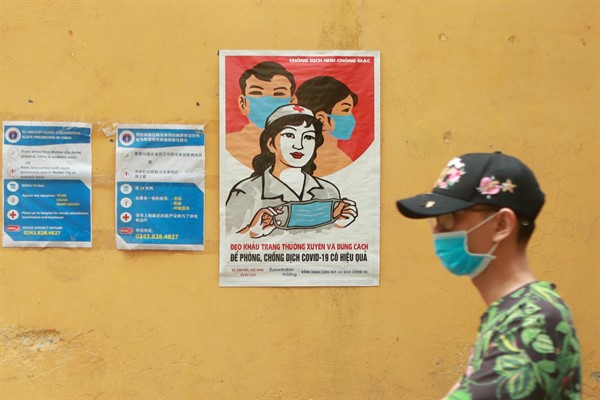With the exception of Thailand, the five countries of mainland Southeast Asia are some of the poorest in the Asia-Pacific region. According to the World Bank, Cambodia has a per capita GDP of around $1,600, while Myanmar’s is roughly $1,400. Laos and Vietnam fare only marginally better, each at around $2,500. Their political systems run the gamut from semi-democracies to authoritarian one-party states. Yet despite some initial missteps, they have all largely suppressed COVID-19, proving far more effective in addressing the pandemic than most developed countries, including the United States.
Vietnam, a country of roughly 95 million people, has reported a handful of deaths and only 784 total cases, as of Sunday. It has seen a recent surge, centered on the coastal city of Da Nang, but even that outbreak remains small by global comparison. Its neighbors have done nearly as well. Thailand, which has a population of just under 70 million, has not had locally transmitted cases in weeks, and only around 3,300 cases in total. Many aspects of life are returning to normal in the capital, Bangkok, and in other parts of the kingdom. By comparison, Florida, with a population of around 21 million people, has recently been averaging about 6,600 new cases per day.
Cambodia, meanwhile, has had only around 200 confirmed cases, and is even allowing in Americans, a risk few countries are willing to take right now. Laos and Myanmar have had only 20 and 358 confirmed cases, respectively. While the real number of cases is likely higher in all of these countries, their performance still stands out as a bright spot in the global fight against the coronavirus. Many of their maritime Southeast Asian neighbors, particularly the Philippines and Indonesia, are struggling with high caseloads.

